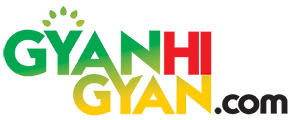ART consumable devices market to exceed $440 mn by 2030: Report

New Delhi, May 17 (IANS) Improvements in Assisted Reproductive Technology (ART) have enabled millions of women across the world facing infertility to conceive over the past few decades, and this trend is likely to continue well into the future, boosting the value of the consumable ART devices market to exceed $440 million by 2030, according to a report on Wednesday.
ART collectively refers to reproductive health techniques, procedures, and devices that help infertile women achieve pregnancy. For decades now, several techniques of ART have been in use with varying pregnancy success rates, but the most performed one now is called in vitro fertilisation (IVF).
A procedure of IVF is typically referred to as a cycle, as it usually takes approximately two weeks to complete the standard fresh IVF cycle given the number of time-sensitive steps involved.
According to the latest market model by data and analytics company GlobalData, the consumable ART devices market is set to grow at a compound annual growth rate of 6 per cent through 2030.
"Some of the key drivers of global market growth in IVF device sales are the increasing number of fertility clinics, an increase in the average age of couples choosing to have children, and an increasing number of women opting to undergo IVF as it has proven to improve pregnancy success rates," said Brian Hicks, Senior Analyst at GlobalData, in a statement.
Devices used in ART cycles vary widely depending on the specific techniques used and the manufacturers from which fertility clinics opt to purchase them. Broadly, ART devices are categorised as installed-base systems or consumable devices.
Examples of system devices include incubators and biological safety cabinets, where their lifespans exceed several years with proper maintenance.
Consumables, on the other hand, include single use, disposable devices like catheters and pipettes, which need to be repurchased for every new step of a procedure and for every patient.
"Emerging technologies will also play a role in drawing more patients, such as time-lapse embryo culture and the integration of artificial intelligence (AI), whereby patient profiles and embryo development are quantitatively assessed to improve pregnancy success rates using the healthiest embryos," Hicks said.
"The increased awareness and access to ART, in turn, has driven the market growth for consumable ART devices like oocyte aspiration needles, IVF media, and embryo transfer catheters," he said.
--IANS
rvt/vd
